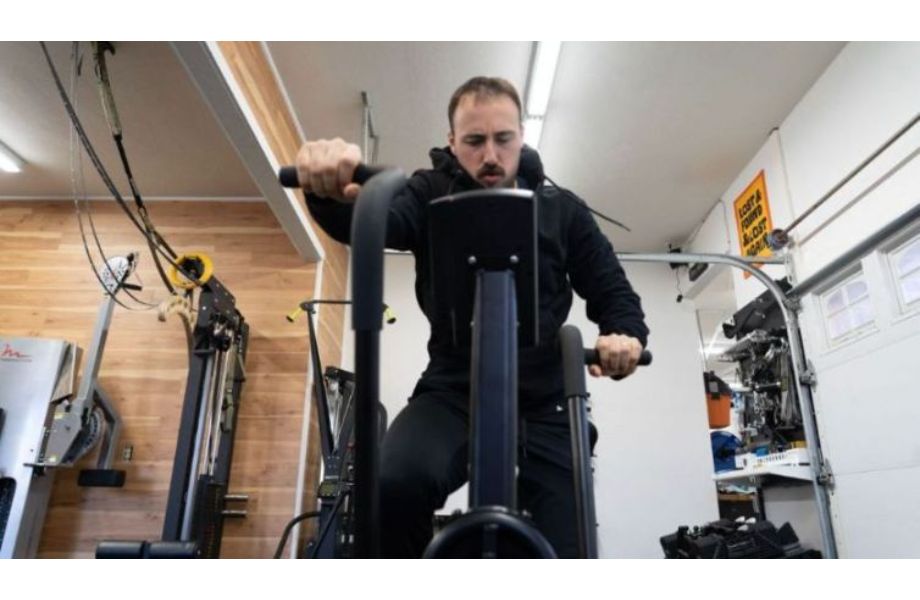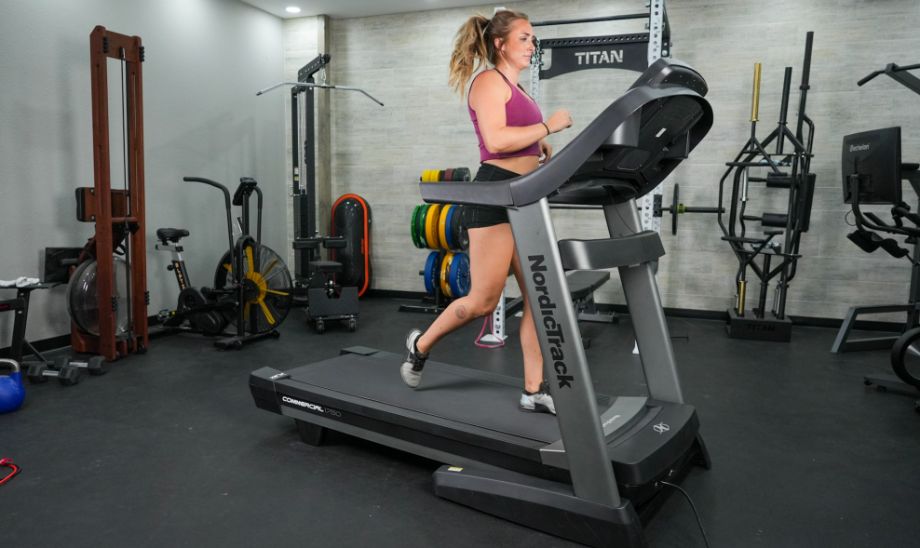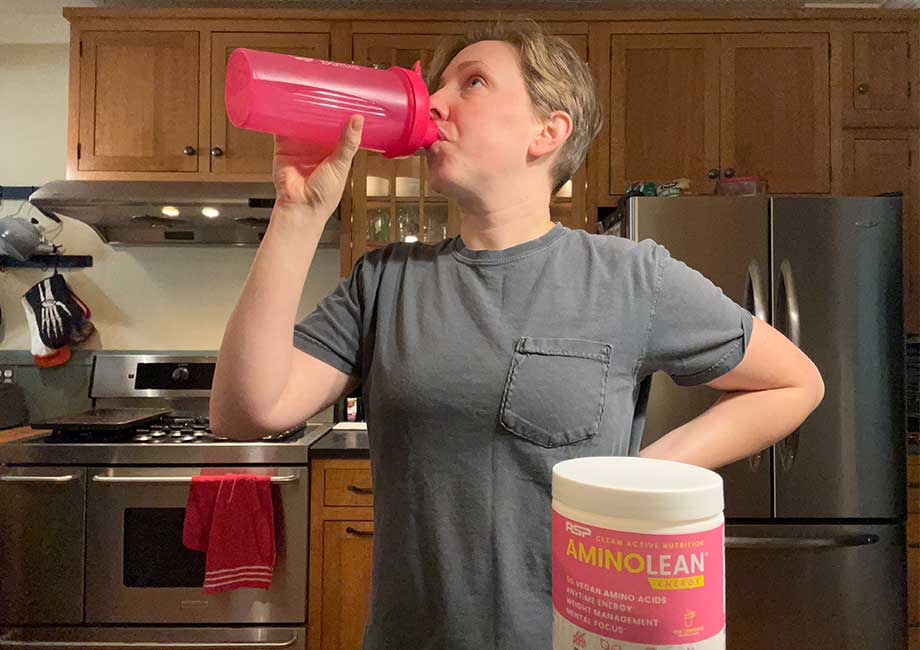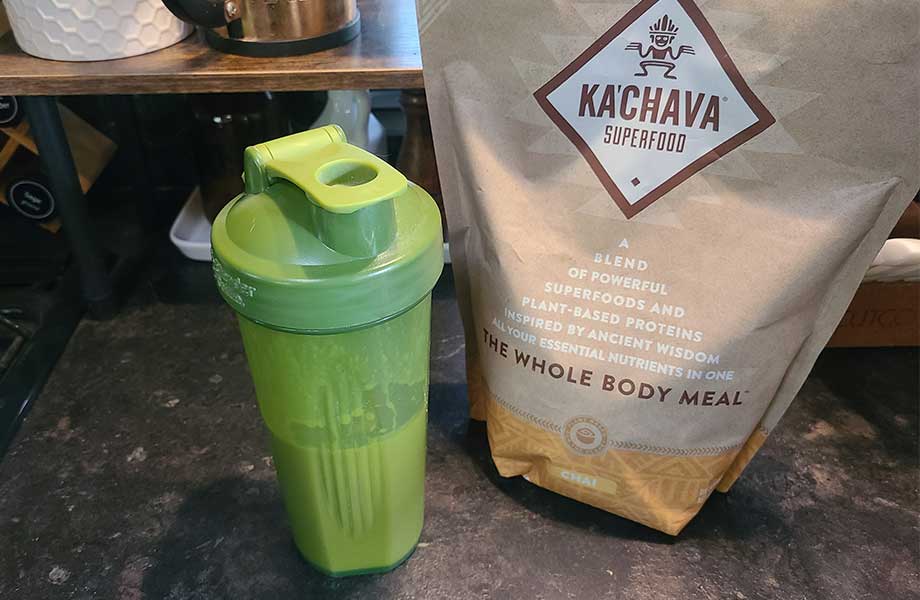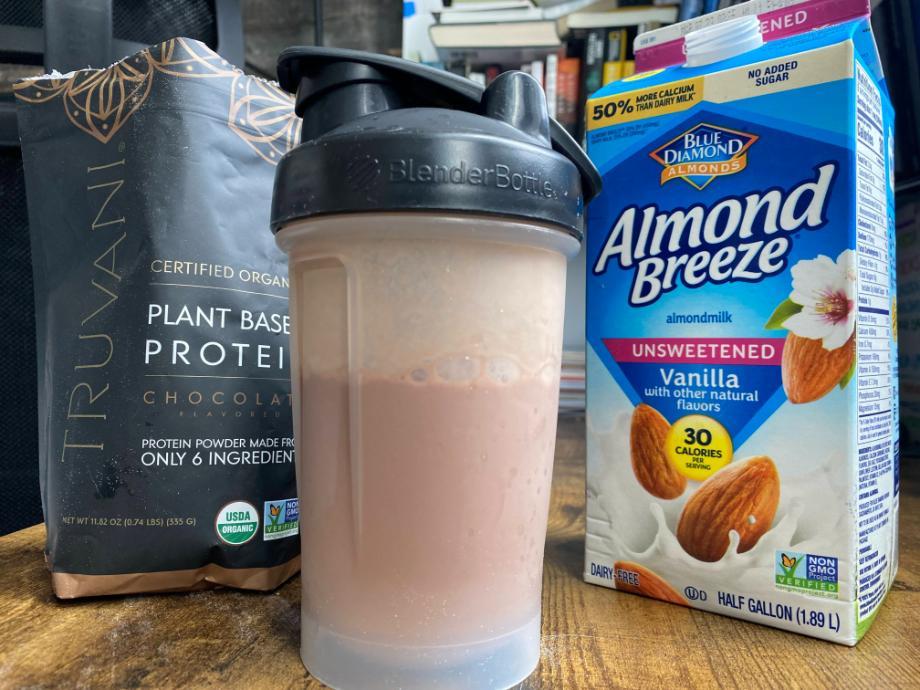PRs, HIIT, EPOC, METs, DOMS—it’s safe to say the fitness world is filled with acronyms that look more like alphabet soup. But wait a second… What is METs?
Ahead, we’ll meet METs and get cozy with how and why you might use them in your exercise regimen. So, stay tuned and find out if that alphabet soup should be stocked in your fitness pantry!
Related: Gym Lingo You Should Know
Defining METs: What Is a MET?
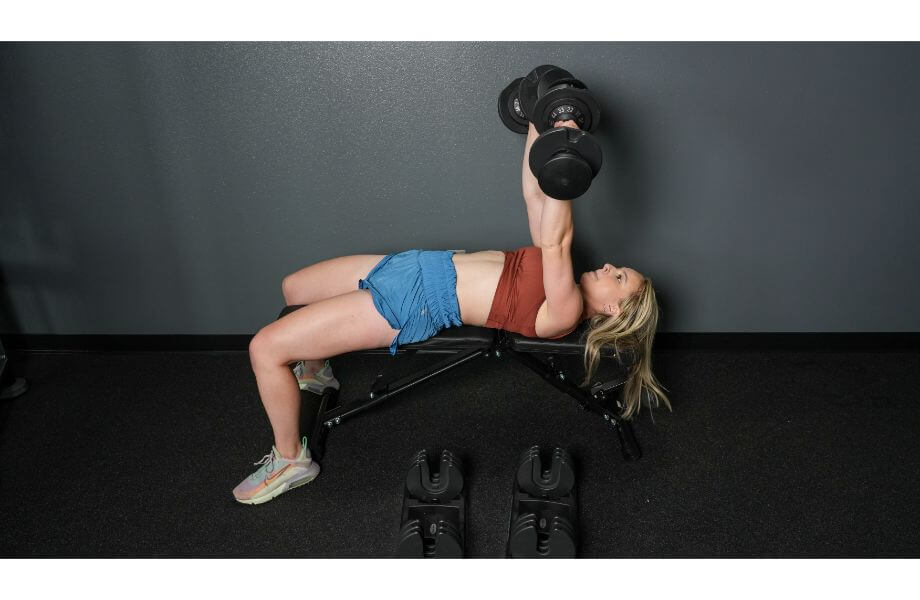
A MET is an acronym for metabolic equivalent of task and is defined as “the ratio of the work metabolic rate to the resting metabolic rate” according to the official Compendium of Physical Activities1 website. It’s also defined as 3.5 milliliters (mL) of oxygen per kilogram (kg) of body weight per minute, as well as 1 kcal per kg per hour.
In layman’s terms, one (1) MET equals the oxygen cost of sitting quietly. It also compares how much energy you use while resting/sitting still compared to the energy used during various activities.
To help put this into application, let’s say the activity of choice has a MET level of 6. This would suggest you would burn six times the energy if you were to sit still.
The Compendium of Physical Activities for METs
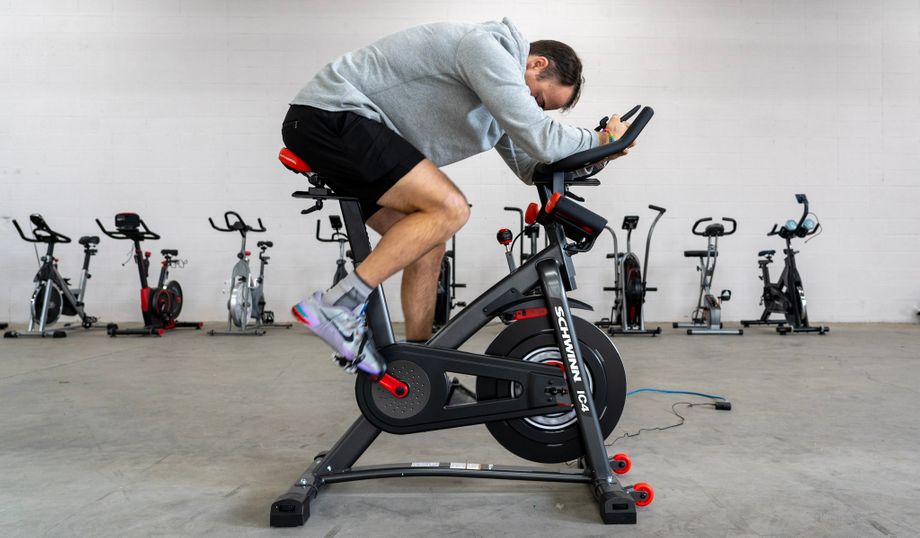
The Adult Compendium of Physical Activities is a coding scheme that helps classify and organize physical activity by the rate of energy expenditure. It was originally developed in 1989 to standardize MET intensities in physical activity questionnaires.
Since its development, the Compendium has been used in studies worldwide and continues to modify and add various activities. The Compendium has three versions—the first available in 1993, the second in 2000, and the latest in 2011.
The Compendium categorizes activities and their intensities using a five-digit code. The code identifies the category (or heading) as the first two digits and the type (description) as the last three digits.
Let’s take the 2011 Compendium code ‘01003’ as an example:
- 01003 – The heading ‘01’ categorizes bicycling. (Activity categories range from 01 to 21; “New Activity Updates” has also been added to include new activities, descriptions, and METs since the 2011 Compendium of Physical Activities was published.)
- 01003 – The description ‘003’ describes “bicycling, mountain, uphill, vigorous” as the type of bicycling.
Also important to note, you will notice blue and red codes within the activity tables. Blue codes signify the activity and associated MET values are supported in published literature, while red codes are estimated values.
How are METs Calculated?
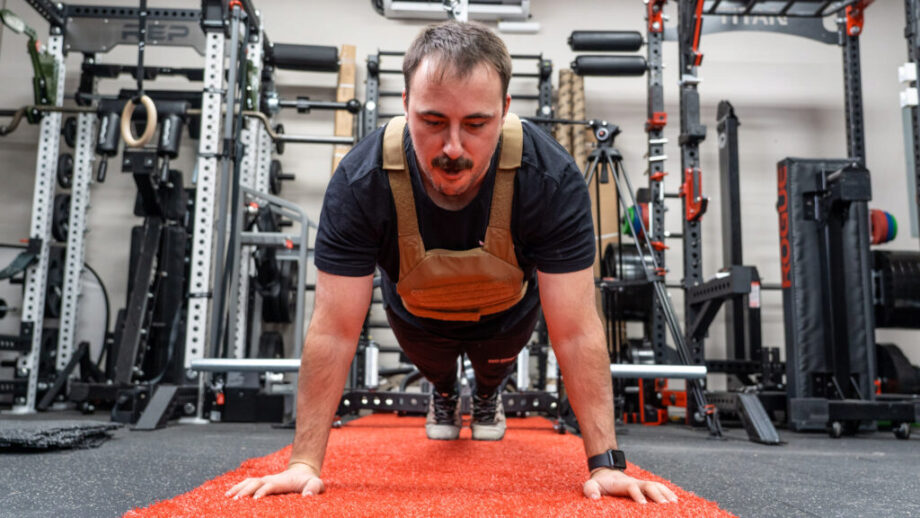
METs are calculated based on units of oxygen. So before crunching the numbers, it’s helpful to have a general understanding of how the body uses oxygen for energy.
If you think back to your first science and biology classes, you might recall mitochondria is also known as the “powerhouse of the cell.” If you’re wondering what mitochondria have to do with METs, these cell organelles generate power and energy. Cells that need a lot of energy, like muscle cells, are enriched with thousands of mitochondria.
Mitochondria, especially when active, consume oxygen to generate cellular energy according to a 2021 review2 on mitochondria and oxygen homeostasis. Oxygen consumption is also referred to as VO2, or the volume of oxygen the body consumes.
VO2 max, or maximal oxygen consumption, measures the max amount of oxygen someone can use during intense exercise. It’s a widely tracked metric among exercisers, especially endurance athletes, and is often used to gauge someone’s fitness level and overall health.
So now that we have been (re)acquainted with mitochondria’s role in oxygen consumption for energy production, let’s get into how METs are calculated. The Compendium provides two key equations to calculate METs:
- MET equation #1: 3.5 ml O2 x kg x min: This refers to the amount of oxygen the body uses when sitting still for one minute.
- MET equation #2: 1 kcal x kg x hour: This equation helps estimate the energy used while resting/sitting still—or 1 MET—for one hour.*
*It’s important to note while you can estimate calorie expenditure using METs, the Compendium was not developed to determine precise energy cost of physical activity.
MET Calculation Example
With the equations introduced, let’s put them into practice and application using someone who weighs 200 pounds (lb). Because each equation uses a kilogram of body weight, we first need to divide 200 lbs by a standard of 2.2 to get 90.9 kg—200 lbs/2.2=90.9 kg.
Now let’s plug and chug with both equations:
- MET equation #1 example: 3.5 ml x 90.9 kg x 1 min = 318.15 ml of oxygen consumed while sitting quietly for one minute.
- MET equation #2 example: 1 kcal x 90.9 kg x 1 hr = 90.9 cals, or energy, used while sitting still/resting for one hour. If you know the MET value of an activity, you can multiply the MET by the cals used at rest. For example, if your 1-hour exercise of choice had a MET value of 5, that would equate to about 455 calories (90.9 x 5).
MET Values for Common Activities
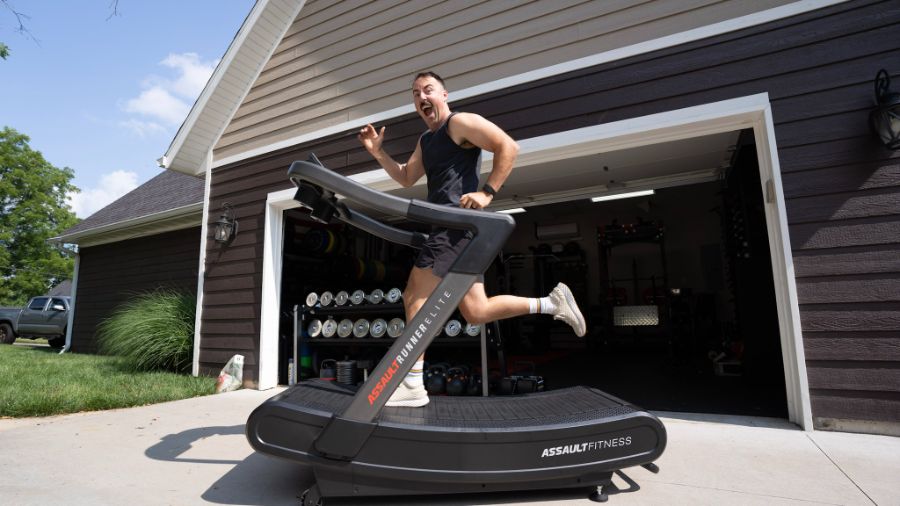
With 21 major activity categories and over 800 activities listed, the Condenium is pretty darn inconclusive and diverse. To help you get a better sense of MET values for common activities and their respective intensities, we compiled a list guided by the trusty Compendium of Physical Activities website.
Guided by a table published in the British Journal of Sports Medicine3, we also categorized activities and MET values using general physical activity intensities. For instance, sedentary and sitting activities are equal to or less than 1.5 METs, light-intensity activities range from 1.5 to 3.0 METs, and so on.
And to determine estimated calories burned per hour, we turned to Cornell University’s METS to Calories Calculator—which calculates calories based on MET values, body weight (in pounds), and time (in minutes). For the table below, we used the 200-pound individual in the example above and 60 minutes to cover one hour.
| Physical Activity | MET Value | Estimated Calorie Burn (based on 200 lbs/60 min) |
| Sedentary + Standing | ≤1.0 to ≤1.5 | |
| standing quietly, standing in a line | 1.3 | 118.2 |
| reclining, reading | 1.3 | 118.2 |
| sitting, studying, general, including reading and/or writing, light effort | 1.3 | 118.2 |
| Light-Intensity Physical Activity | <1.5 to <3.0 | |
| sitting, fidgeting feet | 1.8 | 163.6 |
| yoga, Hatha | 2.5 | 227.3 |
| standing, miscellaneous | 2.5 | 227.3 |
| walking, 2.0 mph, level, slow pace, firm surface | 2.8 | 254.5 |
| Moderate-Intensity Physical Activity | ≤3.0 to <6.0 | |
| cleaning, sweeping carpet or floors, general | 3.3 | 300 |
| bicycling, leisure, 5.5 mph | 3.5 | 318.2 |
| cooking or food preparation, moderate effort | 3.5 | 318.2 |
| walking, 3.5 mph, brisk speed, not carrying anything | 4.3 | 390.9 |
| circuit training, moderate effort | 4.3 | 390.9 |
| rowing, stationary, general, moderate effort | 4.8 | 436.4 |
| walk/run play with children, vigorous, only active periods | 5.8 | 527.3 |
| Vigorous Physical Activity | ≤6.0 | |
| running, 4 mph (15 min/mile) | 6.0 | 545.5 |
| skating, ice, general | 7.0 | 636.4 |
| general dancing (e.g., disco, folk, Irish step dancing, line dancing, polka, contra, country) | 7.8 | 709.1 |
| bicycling, 12-13.9 mph, leisure, moderate effort | 8.0 | 727.3 |
| running, 5 mph (12 min/mile) | 8.3 | 754.5 |
| rope jumping, fast pace, 120-160 skips/min | 12.3 | 1,118.2 |
Which Activities Use the Most METs?
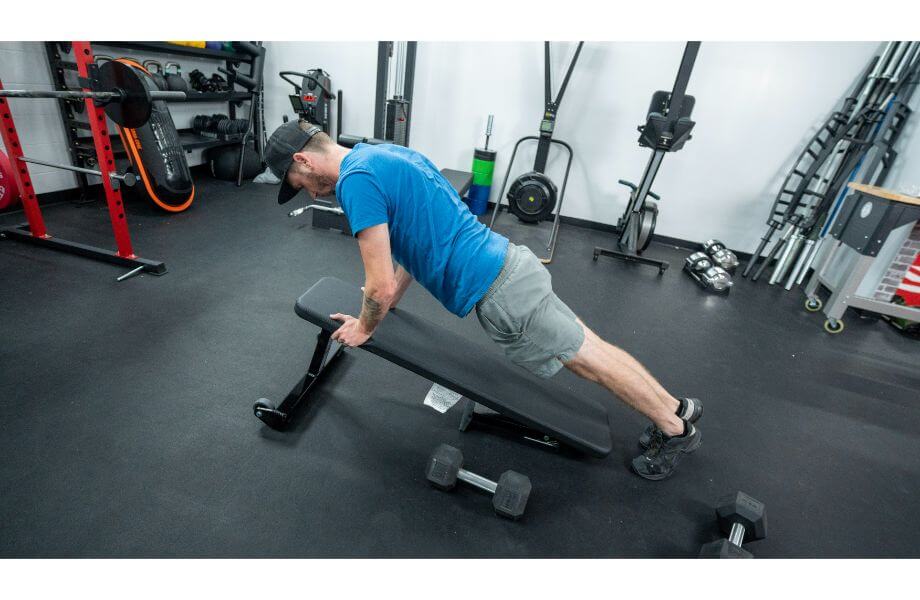
Because the higher the intensity the higher the MET, activities with the most METs are naturally the ones that are more intense. Below captures some of the activities that use the most METs, including fast pace rope jumping, running over 9 miles per hour, and bicycling indoors—and up a mountain.
Trivia time! Which activity do you think uses the most METs? Hint: Eliud Kipchoge almost held this marathon pace…
| Physical Activity | MET Value | Code |
| rope jumping, fast pace, 120-160 skips/min | 12.3 | 15550 |
| canoeing, rowing, kayaking, competition, >6 mph, vigorous effort | 12.5 | 18060 |
| running, 9 mph (6.5 min/mile) | 12.8 | 12110 |
| boxing, in ring, general | 12.8 | 15100 |
| windsurfing, competition, pumping for speed | 13.5 | 18390 |
| swimming, butterfly, general | 13.8 | 18270 |
| Skating, ice dancing | 14.0 | 19018 |
| rollerblading, in-line skating, 24.0 km/h (15.0 mph), maximal effort | 14.0 | 15594 |
| bicycling, mountain, uphill, vigorous | 14.0 | 01003 |
| bicycling, stationary, 201-270 watts, very vigorous effort | 14.0 | 02015 |
| running, 10 mph (6 min/mile) | 14.5 | 12120 |
| skiing, cross country, >8.0 mph, elite skier, racing | 15.0 | 19110 |
| skiing, cross country, hard snow, uphill, maximum, snow mountaineering | 15.5 | 19130 |
| skindiving, fast | 15.8 | 18180 |
| bicycling, > 20 mph, racing, not drafting | 15.8 | 01060 |
| bicycling, mountain, competitive, racing | 16.0 | 01004 |
| running, 11 mph (5.5 min/mile) | 19.0 | 12132 |
| running, 13 mph (4.6 min/mile) | 19.8 | 12134 |
| running, 14 mph (4.3 min/mile) | 23.0 | 12135 |
Trivia answer: Did you guess running at 14 miles per hour as the highest MET? If you can believe it, Eliud held an impressive 4:38.4 marathon pace to set the world record marathon time!
To put this into perspective, the average marathon finish time is 04:32:49 or 10:24 per mile. The Compendium suggests running at a 10-minute-per-mile pace holds a 9.8 MET value—and Eliud’s estimated MET value more than doubles that based on his (almost) unhuman-like pace!
How to Increase METs of an Activity
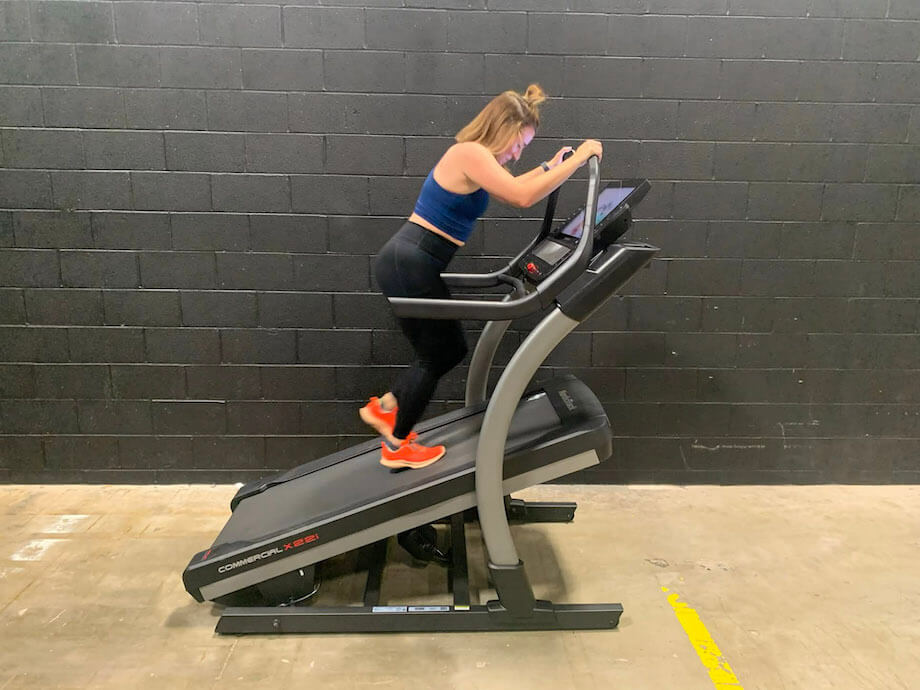
You can also increase the MET values within selected activities. Let’s suppose you love to walk—and would rather clean a barbell 1,093 times than tie up your shoes for a running workout—but want a little more bang for your fitness buck. If you typically enjoy walking around a scenic park, know there are a few ways to increase the intensity and MET value without giving up your view.
To set the [park] scene, we’ll say you currently walk at a 3.5-mile-per-hour pace on a level and firm surface. According to the Compendium, this has a MET value of 4.3.
Now, let’s pave the path on how you could increase your MET value:
- Pick up the pace: Even increasing the pace from 3.5 to 4.0 miles per hour (also on a level and firm surface) increases the MET value by 0.7 for a total of 5.0 METs. Generally, brisk walking has a higher MET value compared to leisurely walking.
- Increase the incline: Instead of walking on a flat surface, you can walk uphill on a 1% to 5% grade incline. Even at a slower and similar pace (2.9 to 3.5 miles per hour) compared to the typical pace (3.5 miles per hour), the MET value has increased from 4.3 to 5.3.
- Change direction: Walking backward at a 3.5 miles per hour pace is designated with a 6.0 MET level! But that’s not all… Walking backward at a 3.5 mile-per-hour pace on a 5% incline grade has a whopping MET value of 8.0! (We always encourage exercising safety but especially if walking backward…)
- Add weight/resistance: While the pace is not defined, climbing hills with a 0 to 9-pound load has a MET value of 6.5. Quadruple the weight to 42 pounds, and you’re looking at a MET value of 8.3. (DEFINITELY exercise safely if trying this at
homethe park!)
Overall, you can manipulate the MET values within one activity—whether it be walking on an incline, adding resistance on a stationary bike, or even shoveling the snow at a faster pace. You can also combine various variables to enhance the intensity like adding ankle weights while walking on an incline and adding ankle weights while walking backward on an incline…
So, keep experimenting with various intensity manipulators until you’ve ‘MET’ your match!
What Should You Measure: METs or Calories?
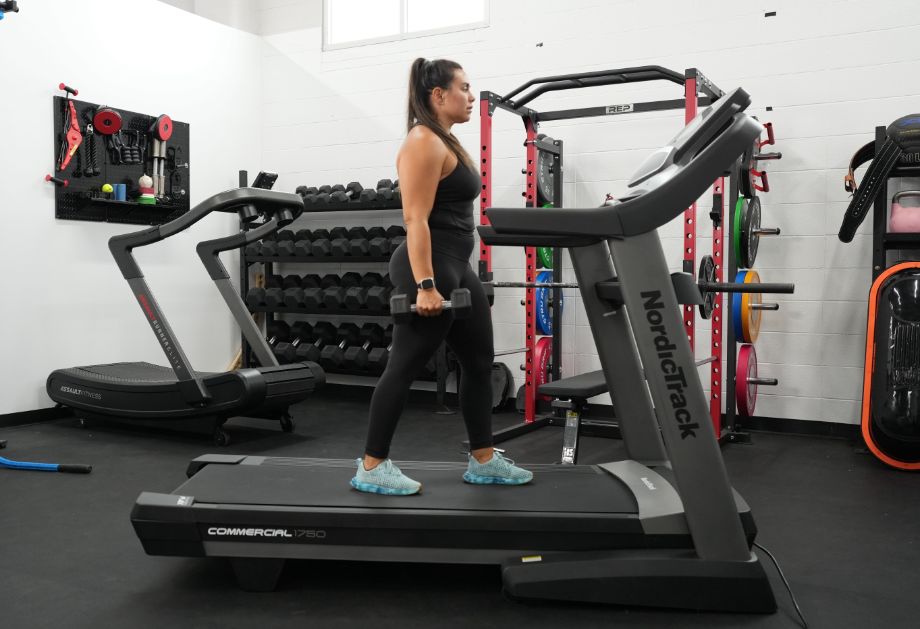
While we’ve already hinted about calories, what exactly are they and how do they differ from METs? Do calories and METs have any useful overlap and should you measure one over the other? We’ll help you decide, but let’s ensure we’re on the same page about what calories and METs are.
As a refresher, METs help categorize physical activity and exercise intensity while estimating energy expenditure. They are calculated using units of oxygen consumption or kilocalories, body mass, and time.
Calories are a unit of energy—and you’ve likely seen calories listed on food labels and menus and measured on fitness trackers and cardio equipment. Now, this begs the question, why measure calories over METs if METs help estimate how many calories you expend at rest and while exercising?
Well, which you prefer measuring mostly depends on your own personal fitness goals and needs.
For Weight-Based Goals: Calories
You’ve likely heard “calories in vs. calories out” regarding weight loss or gain and generally, it is true you need to be in a caloric deficit to lose weight and a calorie surplus to gain weight. People can also manage their current weight by being in a calorie or energy balance.
So if you have a weight-based goal, counting calories might be the better option for you. This is because calories measure energy in food and physical activity, whereas METs only cover energy used and expended during exercise.
For General Health and Fitness: METs
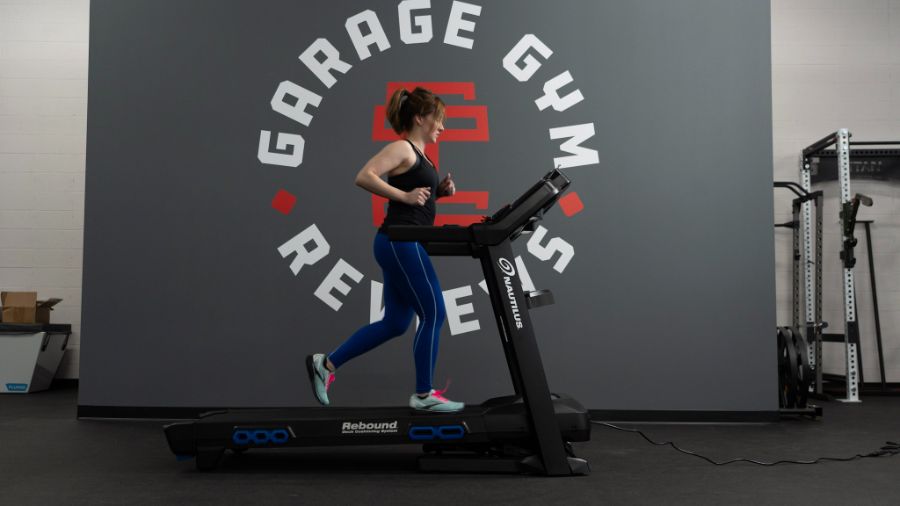
Calories are often at the center of health convos but they aren’t the end-all-be-all. While they are important to acknowledge weight-based goals, and to mitigate the risks of obesity and chronic health conditions like heart disease, calories don’t paint the full fitness picture.
With METs, you have a clearer guide on how to meet the physical activities set by reputable organizations such as the U.S. Department of Health and Human Service’s Physical Activity Guidelines for Americans4. For substantial health benefits, the guidelines recommend adults meet the following:
- At least 150 to 300 minutes of moderate-intensity exercise, or activities with a 3.0 to 5.9 MET value such as brisk walking, mopping, and raking the yard
OR
- 75 minutes to 150 minutes of vigorous-intensity aerobic physical activity, which includes activities with 6.0 or more METs such as walking very fast, shoveling snow, and a strenuous fitness class
OR
- An equivalent combination of moderate- and vigorous-intensity aerobic activity
AND
- Muscle-strengthening activities of moderate or greater intensity that involve all major muscle groups on 2 or more days a week (no specific MET value but highly encouraged!)
Using these recommendations and MET values in tandem, it gives you great autonomy to choose exercises you enjoy without feeling as if you need to burn an X amount of calories.
Even if you complete activities with a MET value less than 3.0 but more than 1.0, it’s still a reminder you are still being active and exercise does not have to be so structured. Truly, the body craves, appreciates, and benefits from all movement!
For Exercise Programming: METs
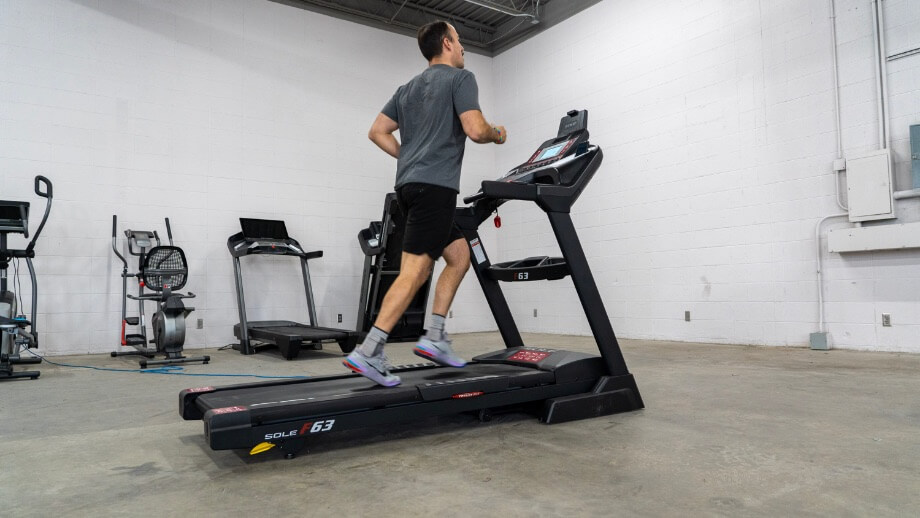
Have you ever sat down and mapped up your training goals and schedule? Most likely, you considered the intensity of your workouts—not how many calories you want to burn in each training session.
Personal trainers, doctors, and other healthcare experts also use METs for exercise prescriptions. Health status can greatly impact recommendations, although a dated yet profound 1990 study5 suggests a training intensity of 60% to 70% of maximum METS, or the average level of anaerobic threshold, is typically prescribed for most healthy people for continuous aerobic training.
METs vs Calories: Which You Should Measure?
Overall, knowledge of each can be useful and you can even track both in various capacities. But whether or not you decide to measure one, both, or neither mostly depends on your personal preferences and fitness goals.
Especially for those who simply just want to be more active, tracking and measuring either may seem more like a hassle. Others, however, might feel empowered tracking and manipulating their metrics.
Tracking calories can be helpful for people with weight loss goals, as well as fitness enthusiasts who want to ensure they are fueling and recovering properly through their diet. On the flip side, tediously tracking calories can start forming a negative relationship with food.
As you can see, whichever you choose—or not choose—is very individualized. And if you’d like to start tracking these metrics or others but are unsure where to start, consider consulting with a personal trainer, registered dietitian, and/or another healthcare professional to help you get started in reaching your goals.
Do METs Really Matter?
As hinted above, whether or not METs truly matter likely depends on your current fitness goals and preferences. And here’s a caveat about most fitness metrics—they should be used mostly as a reference. Also like most fitness metrics, METs can and do have their time and place.
Especially for newbies wanting to embark on their fitness journey, using the Compendium to select activities with varying intensities is a great place to start. Plus, it can be quite motivating to see the household chores you are already doing are considered physical activity—or maybe motivate you to start those household chores…
Also unless you are tracking your heart rate and being totally in tune with your body, it can be tough to differentiate moderate-intensity activity and vigorous-intensity activity. Having a general idea of the MET values and intensities of various exercises can offer more clarity without the need for technical equipment and heightened body awareness.
What is METs: Final Thoughts
A MET—an acronym for metabolic equivalent of task—is the oxygen used while sitting still. It can also help you estimate energy cost at rest, also known as resting metabolic rate.
- A single MET is mathematically defined as 3.5 mL of oxygen x kg of body weight x minute, as well as 1 kcal x kg x hour.
- A MET value of 2 suggests you would expend twice the number of calories compared to at rest; a MET value of 3 suggests three times more, and so on.
- MET values are categorized in the Compendium of Physical Activities, which includes various activity categories and intensity levels.
- The higher the MET value, the higher the intensity of the physical activity/exercise.
- METs listed in the Compendium help reiterate that movement is still movement and i.e. playing with your kids, cleaning the house, mowing lawns, and so much more.
While MET equations and the specifics might seem science-heavy, the reality is METs can be simple to put into practice. Simply check out the Compendium, choose one or a few exercises that align with your exercise goals, and mix and match as you wish.
Truly, that’s one thing we appreciate so much about exercise and physical activity—you can make your fitness pantry your very own. It’s also likely emptying and replenishing so even if METs aren’t on your shelf this go-round, remember they’re a metric always at your disposal!
What is METs: Q&A
How many METS should I exercise at?
A general rule of thumb is following the Physical Activity Guidelines for Americans3, which is at least 150 minutes of moderate-intensity exercise (3.0 to 5.9 METs) or 75 minutes of vigorous-intensity exercises (6.0 or more METs).
Ultimately, though, you should exercise at a MET value you can safely handle. So if you are just stepping into an exercise routine, start with lower-intensity exercises then work up to more intense ones with higher METs.
What is a good metabolic equivalent?
A “good” metabolic equivalent varies from one person to the next due to everyone’s unique fitness levels. For instance, an experienced endurance athlete will likely naturally hit a higher MET value compared to someone who averages 10,000 walking steps per day at a casual pace—both are great forms of physical activity but one is not necessarily better than the other.
Again, aim for the recommendations set by the Physical Activity Guidelines3. And as you get comfortable with an intensity, slowly up the MET value enough to challenge yourself but not enough to compromise your form.
Should you aim for the highest MET levels?
Of course, it’s always great to shoot for the stars, but not at the expense of your health and safety. That said, anyone can aim for some of the highest MET levels but we recommend doing so cautiously no matter the fitness level.
If you are fresh to the workout scene, first get acclimated with proper form, breathing technique, etc. then slowly introduce intensity. Even if you are a seasoned fitness enthusiast aiming for the highest MET levels, ensure you are properly warming up and cooling down.
How much is 4 METs of activity?
A MET value of 4 suggests you would use four times the energy during that activity compared to when at rest. So if your single MET value is 80 calories per hour while sitting still, you could assume an activity with 4 METs would use about 320 calories.
References
- Compendium of Physical Activity.
- Mori MP, Penjweini R, Knutson JR, Wang PY, Hwang PM. Mitochondria and oxygen homeostasis. FEBS J. 2023;289(22):6959-6968. doi:10.1111/febs.16115
- Holtermann A, Stamatakis E. Do all daily metabolic equivalent task units (METs) bring the same health benefits?. Br J Sports Med. 2019;53(16):991-992. doi:10.1136/bjsports-2017-098693
- U.S. Department of Health and Human Services. Physical Activity Guidelines for Americans, 2nd edition. 2018.
- Jetté M, Sidney K, Blümchen G. Metabolic equivalents (METS) in exercise testing, exercise prescription, and evaluation of functional capacity. Clin Cardiol. 1990;13(8):555-565. doi:10.1002/clc.4960130809


